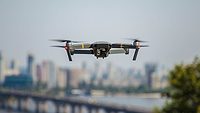Today more than ever, we are in technology-driven times. The Internet of Things (IoT) is real; networked devices are prevalent in everyday life; and some devices are “smart” and learn through repetition and data exploitation and are called Artificial Intelligence (AI). You’ve probably even heard of the terms “machine learning” or “autonomous systems.” This is our reality, and technology continues to evolve at a pace that creates an environment where the abundance of choices and information can sometimes become overwhelming.
Modern security camera systems and the differences between legacy CCTV and evolving IP camera networks is a good example. Often when discussing technical security solutions concerning camera systems, people refer to a video surveillance system as Closed-Circuit Television (CCTV). As we all know CCTV is exactly what the title proposes — closed and associated with television — which suggests an outdated analog system that is running its course and exiting the market as a viable solution for current needs.
Today’s technological advances in video are referred to as “IP Cameras” that function in an overarching video surveillance system (VSS). Having a conversation about what current technology can do in simple terms is helpful, as an organization or security leader in charge of technology within the organization must sift through the options available in commercial products with capabilities that weren’t readily available in the recent past.
Businesses need to understand the cost and total cost of ownership when it comes to these systems and making a choice. Clearly understanding maintenance agreements, license terms and technical support are important components of today’s systems. To better understand the differences between CCTV and IP camera-based systems, consider how they function and what they provide.
Modern digital IP systems are now cost advantageous over analog systems and should be solely recommended for new design or installations. If an existing structure has an analog CCTV system in place, and it meets the security requirements as well as the monitoring expectations of the organization, it may be cost-effective to leave the system in place until the system becomes functionally obsolete. While modern IP-based digital camera systems offer an impressive suite of technology and interoperability with other systems, the cost to upgrade to a digital video surveillance system or VSS may not outweigh the benefit when considering the application of the system.
In general terms, “CCTV” has grown as the term of choice when talking about camera systems, but the term is outdated and doesn’t represent what technology now provides. CCTV is a point-to-point technology that provides surveillance of a specific area while transmitting a signal to a specific monitor or workstation in a command center. CCTV operates on a closed network that must be tied to a digital video recorder (DVR) via a cable connection.
Based on the technical requirements for a CCTV system and the need for direct cable connections to DVRs for processing of the data, the system can become expensive to install and expansion difficult. Other limitations include the number of cameras capable of operating on a single DVR platform. Limited flexibility is a problem with a CCTV system.
Ultimately CCTV is a stand-alone, single-capability tool but has the advantage of having been in use for decades by many businesses, with much of the analog infrastructure already in place. On the other hand, IP cameras employed in an overall VSS are part of a holistic approach to modern security technology design. In the end, the choice is clear when it comes to capability.
IP cameras are digital and networked for real-time use. IP cameras in a video surveillance system or VSS send data over the internet or local area network to a network video recorder while using Power over Ethernet, which consolidates cabling for power and data transmission. The expansion of an IP-camera-based VSS system is simpler and only requires additional storage capability. Additionally, advances in camera capability are creating a completely different experience for IP camera users.
Modern VSS are capable of integrating with intrusion detection systems as well as fire/life safety systems. This interoperability of VSS combined with emerging AI technologies creates a security technology design can reduce chances of human error and security staffing requirements.
Modern IP-based VSS systems may also be designed in a closed circuit for several reasons. Designing a VSS system in a closed circuit will greatly reduce the possibility of access to the data on the circuit without physical access to the circuit itself. Although modern IP-based systems are secure and manufacturers are constantly working to improve security, hacking efforts evolve rapidly as well. It is impossible to say that a system with cloud access is completely safe from an outside entity attempting to access the data on the circuit. Carefully designed closed-circuit systems, as well as end-to-end encryption should be considered for the most secure spaces. Off-the-shelf VSS systems should not.
Closed-circuit systems also gain an advantage in simplicity and reoccurring costs. A closed-circuit system does not require access to the cloud or any other private wireless network. This simple design reduces the possible failure points in the system. Manufactures of cloud-based systems offer very robust cloud platforms to monitor their systems remotely, but these platforms come with an associated reoccurring cost of service contract. Depending on the application of the system and the level of security expected by the owner, a closed-circuit system may be sufficient for on-site live security monitoring as well as forensic investigations after an event.
Security design professionals who are independent of any equipment manufacturer should be consulted while designing and implementing a VSS system. Careful consideration should be given to each application to ensure the system meets the security needs and expectations of the organization.
As Moore’s Law predicted in the 1960s technology advances will double every two years. Modern video systems are surely following that pace.





